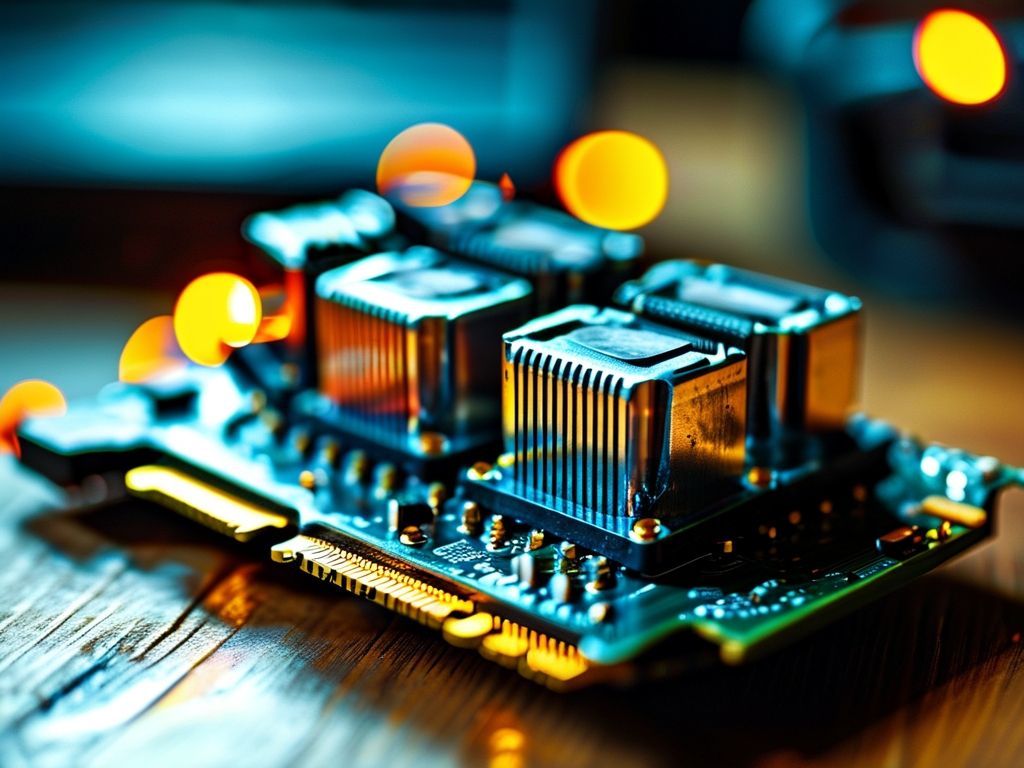In the ever-evolving landscape of computer hardware, the integration of on-board PMIC (Power Management Integrated Circuit) chips in memory modules has emerged as a groundbreaking innovation. This technology addresses critical challenges in power delivery, thermal management, and performance optimization for modern computing systems. As memory speeds and densities continue to rise, traditional power management approaches have become inadequate, paving the way for PMICs to play a pivotal role in next-generation memory designs.

The Role of PMIC in Memory Modules
A PMIC is a specialized semiconductor device that manages voltage regulation, power sequencing, and energy distribution within electronic systems. In the context of memory modules, such as DDR4, DDR5, or LPDDR5, the on-board PMIC replaces external voltage regulators by integrating these functions directly onto the memory substrate. This shift offers several advantages:
-
Precision Power Delivery: Modern DRAM chips require tightly controlled voltage levels (e.g., VDD, VPP, VTT) to operate reliably at high frequencies. PMICs enable dynamic voltage scaling, adjusting power in real-time based on workload demands. For instance, during low-activity periods, the PMIC can reduce voltage to save energy, while boosting it during intensive tasks like gaming or data processing.
-
Reduced Signal Noise: By minimizing the distance between the power source and memory chips, on-board PMICs mitigate voltage droops and electromagnetic interference (EMI). This is critical for maintaining signal integrity in high-speed interfaces like DDR5-6400, where even minor fluctuations can cause errors.
-
Thermal Efficiency: Centralized power management systems often generate excess heat due to inefficient power conversion. PMICs, with their advanced fabrication processes (e.g., 7nm or 5nm nodes), operate at higher efficiencies, reducing thermal load and enabling slimmer device designs.
Technical Advancements Enabled by On-Board PMIC
The adoption of PMICs aligns with broader trends in memory technology:
-
DDR5 Adoption: The DDR5 standard mandates higher data rates (up to 8400 MT/s) and lower operating voltages (1.1V compared to DDR4’s 1.2V). PMICs are essential for achieving these specs, as they provide granular control over multiple voltage rails, including VDDQ (I/O power) and VPP (activation voltage).
-
AI and Edge Computing: Applications like machine learning inferencing and real-time analytics demand rapid access to large memory pools. PMICs enhance stability in these scenarios by ensuring consistent power delivery, even during abrupt load changes.
-
Multi-Chip Packaging: In architectures like HBM (High Bandwidth Memory), where multiple DRAM dies are stacked vertically, PMICs manage power distribution across layers, preventing hotspots and voltage imbalances.
Challenges and Solutions
Despite their benefits, integrating PMICs into memory modules presents challenges:
-
Space Constraints: Adding a PMIC to a memory PCB requires careful layout optimization. Manufacturers use advanced packaging techniques like Embedded Multi-Die Interconnect Bridge (EMIB) or Fan-Out Wafer-Level Packaging (FOWLP) to minimize footprint.
-
Cost Considerations: PMICs increase module production costs, but this is offset by system-level savings. For example, laptops with PMIC-equipped memory may require smaller batteries or cooling systems due to improved efficiency.
-
Compatibility: PMIC firmware must align with motherboard UEFI/BIOS settings. Standardization efforts by JEDEC and Open Compute Project (OCP) are ensuring interoperability across vendors.
Case Study: DDR5 Memory Modules
DDR5 modules exemplify the transformative impact of on-board PMICs. Unlike DDR4, which relied on motherboard-based voltage regulation, DDR5 delegates this task to the module itself. Each DDR5 DIMM now includes a 12V-to-1.1V PMIC, enabling:
- Per-Module Tuning: Overclockers can adjust voltages for individual DIMMs without affecting others.
- Fault Resilience: Built-in diagnostics monitor power health, triggering alerts for anomalies like overcurrent or overheating.
Future Directions
Looking ahead, PMIC technology will continue to evolve:
- AI-Driven Power Management: Machine learning algorithms could predict power needs based on usage patterns, further optimizing efficiency.
- Integration with 3D NAND: As SSDs adopt 3D NAND stacks, PMICs may expand into storage modules to manage power for NAND cells and controllers.
- Sustainable Design: PMICs will play a role in reducing the carbon footprint of data centers by cutting idle power consumption by up to 30%.
The integration of on-board PMICs in memory modules marks a paradigm shift in power management. By delivering precision, efficiency, and scalability, this technology supports the demands of AI, 5G, and IoT ecosystems. As industry standards mature and production scales, PMIC-equipped memory will become ubiquitous, empowering faster, cooler, and more energy-smart devices across all computing domains.





